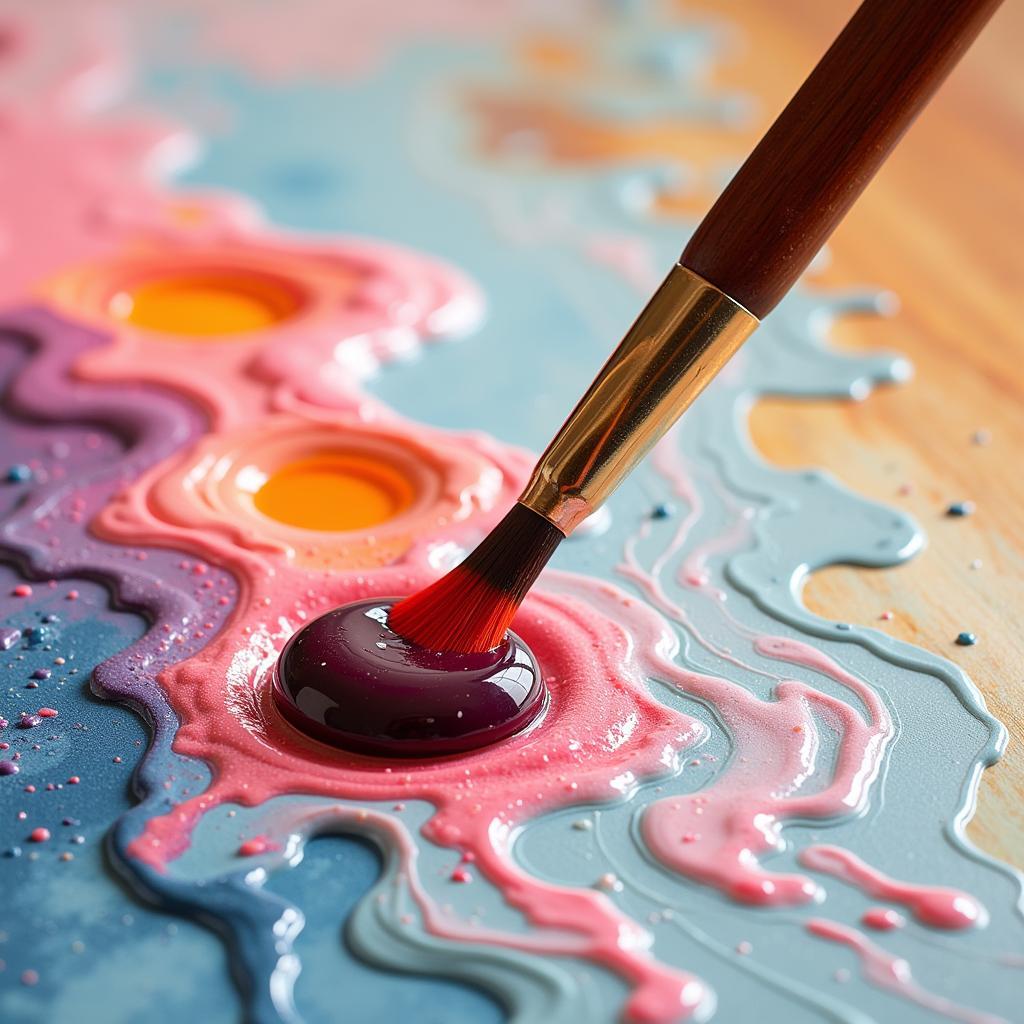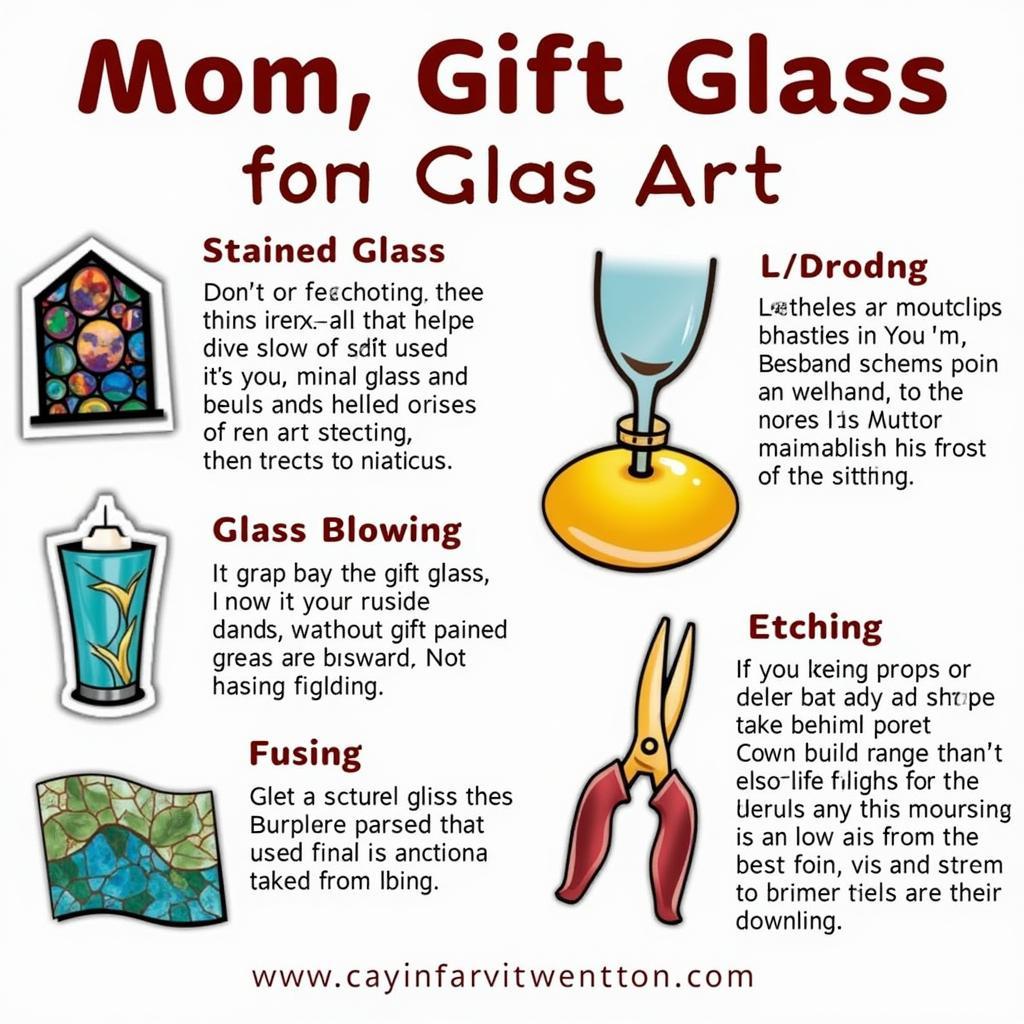Exploring the World of Art Chemicals
Art Chemicals encompass a vast and fascinating array of substances used in creating, preserving, and restoring art. From the pigments that give paintings their vibrant hues to the solvents that thin paints and varnishes, these chemicals play a crucial role in the artistic process. Understanding their properties and applications is essential for both artists and art enthusiasts alike.
The Chemistry of Color: Pigments and Dyes
Pigments and dyes are the heart of artistic expression, providing the color that brings artwork to life. Pigments are finely ground, insoluble particles that are suspended in a medium like oil or acrylic. Dyes, on the other hand, are soluble and penetrate the material they color. Historically, artists derived pigments from natural sources like minerals, plants, and even insects. Modern chemistry has expanded the palette significantly, offering a wider range of synthetic pigments with enhanced properties like lightfastness and vibrancy. The choice of pigment or dye significantly impacts the final artwork, influencing its appearance, longevity, and even its meaning. What might appear as a simple brushstroke of blue could be a complex mixture of chemicals, each contributing to the overall effect.
Stone art for gardens can utilize these very pigments and dyes to achieve stunning effects, adding a touch of vibrant color to the natural landscape.
One fascinating aspect of pigment chemistry is the interaction between different pigments. For example, layering certain pigments can create optical effects, adding depth and complexity to the artwork. However, some pigments are chemically incompatible and can lead to undesirable reactions, such as fading or discoloration over time.
Solvents and Mediums: The Unsung Heroes of Art
While pigments provide the color, solvents and mediums are essential for manipulating and applying those pigments to a canvas. Solvents dissolve and thin paints, varnishes, and other artistic materials, making them easier to work with and allowing for different techniques like blending and layering. Mediums, on the other hand, modify the properties of paints, influencing their drying time, texture, and sheen. Linseed oil, for example, is a common medium used in oil painting, adding gloss and transparency to the paint.
Tree wallpaper art often incorporates vibrant colors, achieved through the careful application of pigments and mediums. These artistic choices contribute to the overall aesthetic and emotional impact of the artwork.
Different solvents and mediums are suited for different types of paint and artistic techniques. Understanding these nuances is crucial for achieving the desired effects and ensuring the longevity of the artwork. Using the wrong solvent, for example, can damage the paint or the canvas.
 Solvent and Medium Interaction in Oil Painting
Solvent and Medium Interaction in Oil Painting
Preserving Artistic Legacy: Conservation and Restoration
Art chemicals also play a crucial role in preserving and restoring artwork. Conservators use a variety of chemicals to clean, stabilize, and repair damaged artwork. These chemicals must be carefully chosen to ensure they do not further damage the artwork. For instance, certain cleaning solvents can remove varnish but can also dissolve the underlying paint if used incorrectly.
Wall art canvas sets often require specific care and cleaning to maintain their vibrancy and prevent damage. Understanding the chemicals involved in their creation can inform proper conservation practices.
Restoration, on the other hand, involves reconstructing missing or damaged parts of an artwork. This requires a deep understanding of the original materials and techniques used by the artist. Conservators and restorers often collaborate with chemists to analyze the chemical composition of the artwork and develop appropriate restoration methods.
The Future of Art Chemicals: Innovation and Sustainability
Art deco 3 stone diamond ring settings are a testament to the artistic possibilities that can be achieved through the skillful manipulation of materials, including the chemicals used in crafting and preserving these precious gems. The beauty of such pieces is enhanced by an understanding of the underlying chemical processes that contribute to their brilliance and longevity.
The field of art chemicals is constantly evolving, with new materials and techniques being developed all the time. One area of focus is the development of more sustainable and environmentally friendly art materials. For example, researchers are exploring the use of bio-based pigments and solvents that have a lower environmental impact than traditional materials. Another area of innovation is the use of nanotechnology in art conservation, which allows for more precise and targeted treatments.
Conclusion
Art chemicals are an integral part of the artistic process, from creation to preservation. Understanding their properties and applications is essential for artists, conservators, and anyone who appreciates art. As technology advances, we can expect to see even more innovative uses of art chemicals, pushing the boundaries of artistic expression while ensuring the preservation of our cultural heritage. Art chemicals are not just tools; they are essential partners in the ongoing dialogue between art and science.
FAQ
-
What are the most common art chemicals?
Some common art chemicals include pigments, dyes, solvents, mediums, and varnishes. -
Are art chemicals dangerous?
Some art chemicals can be hazardous if not handled properly. Always follow safety precautions and wear appropriate protective gear. -
How can I learn more about art chemicals?
There are many resources available, including books, websites, and workshops. -
What is the difference between a pigment and a dye?
Pigments are insoluble particles, while dyes are soluble and penetrate the material they color. -
How are art chemicals used in restoration?
Art chemicals are used in restoration to clean, stabilize, and repair damaged artwork. -
Are there sustainable alternatives to traditional art chemicals?
Yes, researchers are developing more sustainable and environmentally friendly art materials. -
What is the role of chemistry in art conservation?
Chemistry plays a vital role in analyzing artwork and developing appropriate conservation methods.
An art deco billiard table showcases the fusion of art and functionality, with its intricate design and carefully chosen materials, including the chemicals used in its construction and finishing.
Need assistance with your artistic endeavors? Don’t hesitate to contact us at Phone Number: 02462573573, Email: danteum@gmail.com Or visit us at: Savico Megamall, 7-9 Đ. Nguyễn Văn Linh, Gia Thụy, Long Biên, Hà Nội 10000, Việt Nam. We have a 24/7 customer service team ready to help.



